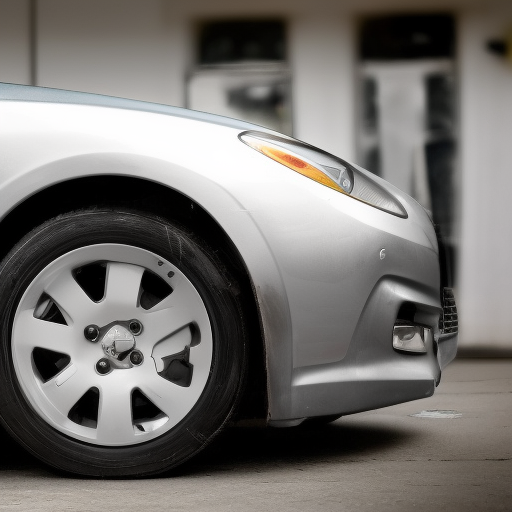Check engine light flashing when key is on position
Have you ever been driving along and suddenly, your check engine light starts flashing? It’s a nerve-wracking moment – what could be wrong with your car? And then you turn the key to the “on” position and the check engine light is still flashing. What does it mean?
As a car owner, it’s important to understand what could be causing your check engine light to flash when the key is in the “on” position. In this blog post, we’ll explore some potential issues and provide potential solutions to help you get back on the road as quickly as possible.
What Does It Mean When the Check Engine Light Flashes?
First things first – it’s important to understand what the check engine light means. This light is part of your car’s onboard diagnostic system (OBD), which is designed to detect problems with your vehicle. When the check engine light comes on, it means that the OBD has detected a problem somewhere in the car’s system.
Now, if the check engine light is flashing, that means there is an urgent problem that needs to be addressed. A flashing check engine light can indicate a serious issue with the car, such as a misfire or a problem with the catalytic converter. If the light is flashing, it’s important to pull over as soon as it’s safe to do so and assess the situation.
Potential Causes of a Flashing Check Engine Light
So, what could be causing the check engine light to flash when the key is in the “on” position? Here are a few potential causes:
Misfire
One possible cause of a flashing check engine light is a misfire. A misfire is when one or more of the cylinders in your car’s engine are not firing correctly, which can cause the engine to run poorly or stall. Misfires can be caused by a variety of issues, such as a faulty spark plug, a malfunctioning fuel injector, or a problem with the ignition system.
Problem with the Catalytic Converter
Another potential cause of a flashing check engine light is a problem with the catalytic converter. The catalytic converter is an important part of the exhaust system that helps to reduce emissions by converting harmful gases into less harmful ones. If the catalytic converter is not functioning properly, it can cause the check engine light to flash.
Faulty Oxygen Sensor
A faulty oxygen sensor can also cause the check engine light to flash. The oxygen sensor is responsible for measuring the amount of oxygen in the exhaust gases and sending this information to the engine control module. If the oxygen sensor is not working properly, it can cause the check engine light to flash.
Other Issues
There are many other potential issues that could cause the check engine light to flash when the key is in the “on” position. Some other potential causes include a faulty mass airflow sensor, a problem with the fuel pump, or a malfunctioning throttle position sensor.
What to Do If the Check Engine Light Is Flashing
If the check engine light is flashing when the key is in the “on” position, it’s important to take immediate action. Here are a few steps you can take:
Pull Over and Turn Off the Engine
If it’s safe to do so, pull over and turn off the engine. Continuing to drive with a flashing check engine light can cause further damage to your car and potentially be dangerous.
Check for Other Warning Lights
Check for any other warning lights on the dashboard. If there are other warning lights, such as the oil pressure light or the temperature gauge, this could indicate a more serious issue that needs immediate attention.
Check for Any Obvious Issues
Before you do anything else, take a look around under the hood and see if you notice any obvious issues. If you see something that looks out of place, such as a loose hose or a visibly damaged part, it’s worth taking note of. This information could help a mechanic diagnose the problem more quickly.
Consult the Owner’s Manual
Next, consult the owner’s manual for your car. Many owner’s manuals have a section that covers the check engine light and provides some guidance on what to do if it comes on. This could help you get a better understanding of what could be causing the problem.
Use an OBD Scanner
If you have an OBD scanner (sponsored), you can use it to read the codes that have been stored by the OBD system. These codes can give you a better idea of what could be causing the check engine light to flash. You can often find OBD scanners at auto parts stores, or you can purchase one online.
Take It to a Mechanic
If you’re not comfortable troubleshooting the problem yourself or you’re unable to diagnose the issue using an OBD scanner, it’s time to take the car to a mechanic. A mechanic has the tools and expertise to diagnose the problem and provide a solution.
Don’t Ignore the Problem
It’s important to address a flashing check engine light as soon as possible. Ignoring the problem could lead to further damage to your car and potentially be dangerous to drive. If you’re unsure of what to do, it’s always best to err on the side of caution and take the car to a mechanic.
Conclusion
A flashing check engine light can be a worrying sight, but by understanding what could be causing the problem and taking the appropriate steps to address it, you can get your car back on the road as quickly as possible. Don’t ignore the problem – take action and get your car checked out by a mechanic if you’re unsure of what to do.






